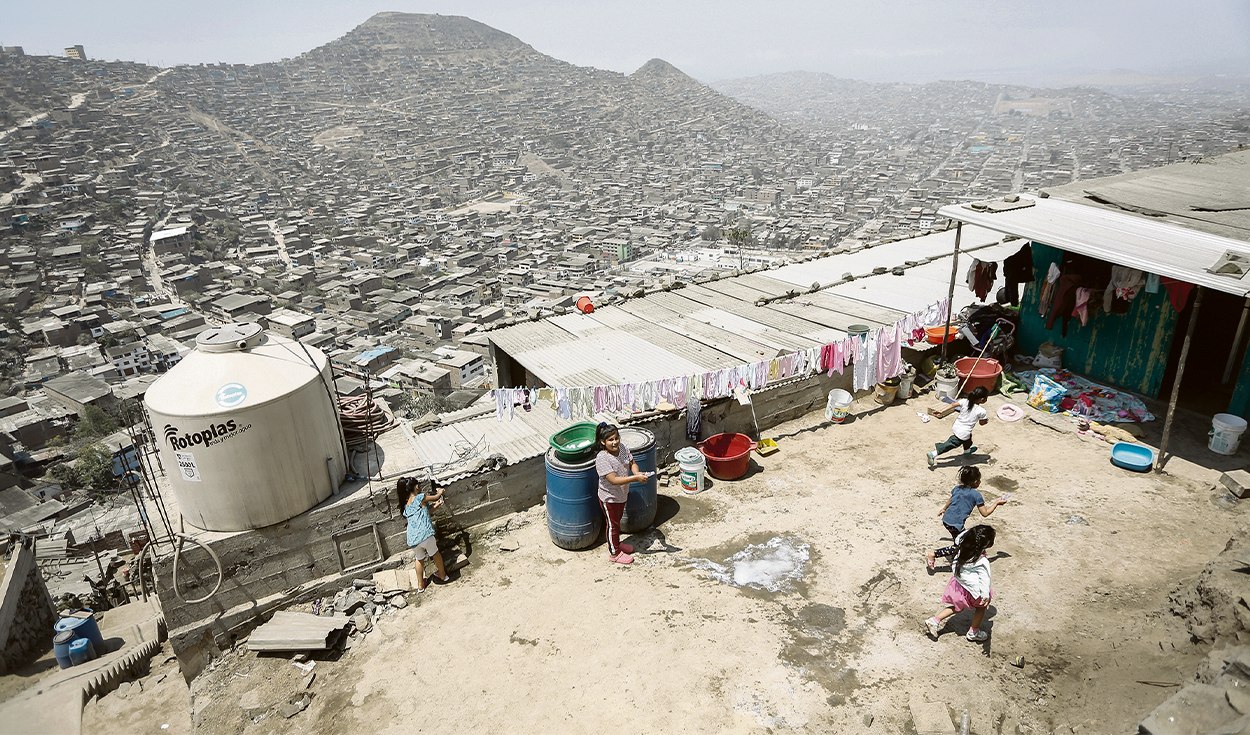
Both the Ministry of Economy and Finance (MEF) and the Central Bank (BCRP) anticipate that the GDP will rebound, after the recession, to 3% this year.
Yesterday, The International Monetary Fund (IMF) reduced its projection from 2.7% to 2.5%; and, although its report does not delve into the defects and challenges facing the Peruvian economy, it looks at the reading that the World Bank (2.7%) and Citi Research (2.4%) have, entities that warn of structural failures in the neoliberal system, such as the monopoly and political interference of big businessmen, which place us far from our potential.
By 2025 they predict that GDP will reach 2.7%; and, regarding inflation, it would reach 2.3% this year, and next year, 2.0%—that is, within the BCRP’s target range, from 1% to 3%.
We must aim for rates of 5%
Specialists consulted by La República, on more than one occasion, have recognized that the statistical rebound of the current will not make it possible to reduce social gaps or improve the quality of life; but, unlike his predecessor, the head of the MEF, Jose Aristais aware that 3% will not be enough at all.
“It is still very insufficient for those three million Peruvians who have been getting poorer since 2021. We must aspire to grow at rates close to 5%,” Arista mentioned to RPP a couple of weeks ago.
The formula to recover the ground? Arista assures that the essential thing will be to reduce violence and citizen insecuritywhich costs 3.5% to the GDP, as well as corruption.
Although monetary poverty does not include the true situation of precariousness, it is the most used data to measure it: a third of the Peruvian population lives in poverty, according to the World Bank (32.2%).
Furthermore, another 39.4% are in a vulnerable situation—that is, one step away from being poor—. It should be added that, according to figures from the Private Competitiveness Council, poverty would only return to 20%, its pre-pandemic level, in 2053 if it continues to grow annually at 2%, and to reduce it to 10%—like Chile—it would take 80 years ( 2103) to maintain said rhythm.
How is the economy in the rest of the region?
In IMF calculations, Only after two years would Peru surpass the average of South America and Latin America and the Caribbean (which will fill 1.4% and 2.0%); and, comparing us only with the southern neighborhood, they pass us Venezuela (4.0%), Paraguay (3.8%) and Uruguay (3.7%).
Meanwhile, Brazil, the largest market in the region, will barely vary 2.2%, and Chile, 2.0%. Argentina, during the first year of Milei, will be the only country that ends 2024 with a negative result: -2.8%.
China grew 5.3% in the first quarter
China, Peru’s main trading partner, registered a 5.3% increase in its GDP during the first quarter, in interannual terms. And, for this year, the IMF expects it to register a variation of 4.6%, and 4.1% for 2025.
As reported by La República, Dina Boluarte’s management will propose some adjustments to the FTA – signed 14 years ago – with the Asian giant within the framework of APEC 2024. The Chinese ambassador, Song Yang, described the Chancay megaport, built with Asian capital , as its “golden key” to encourage investments.
Source: Larepublica
Alia is a professional author and journalist, working at 247 news agency. She writes on various topics from economy news to general interest pieces, providing readers with relevant and informative content. With years of experience, she brings a unique perspective and in-depth analysis to her work.











